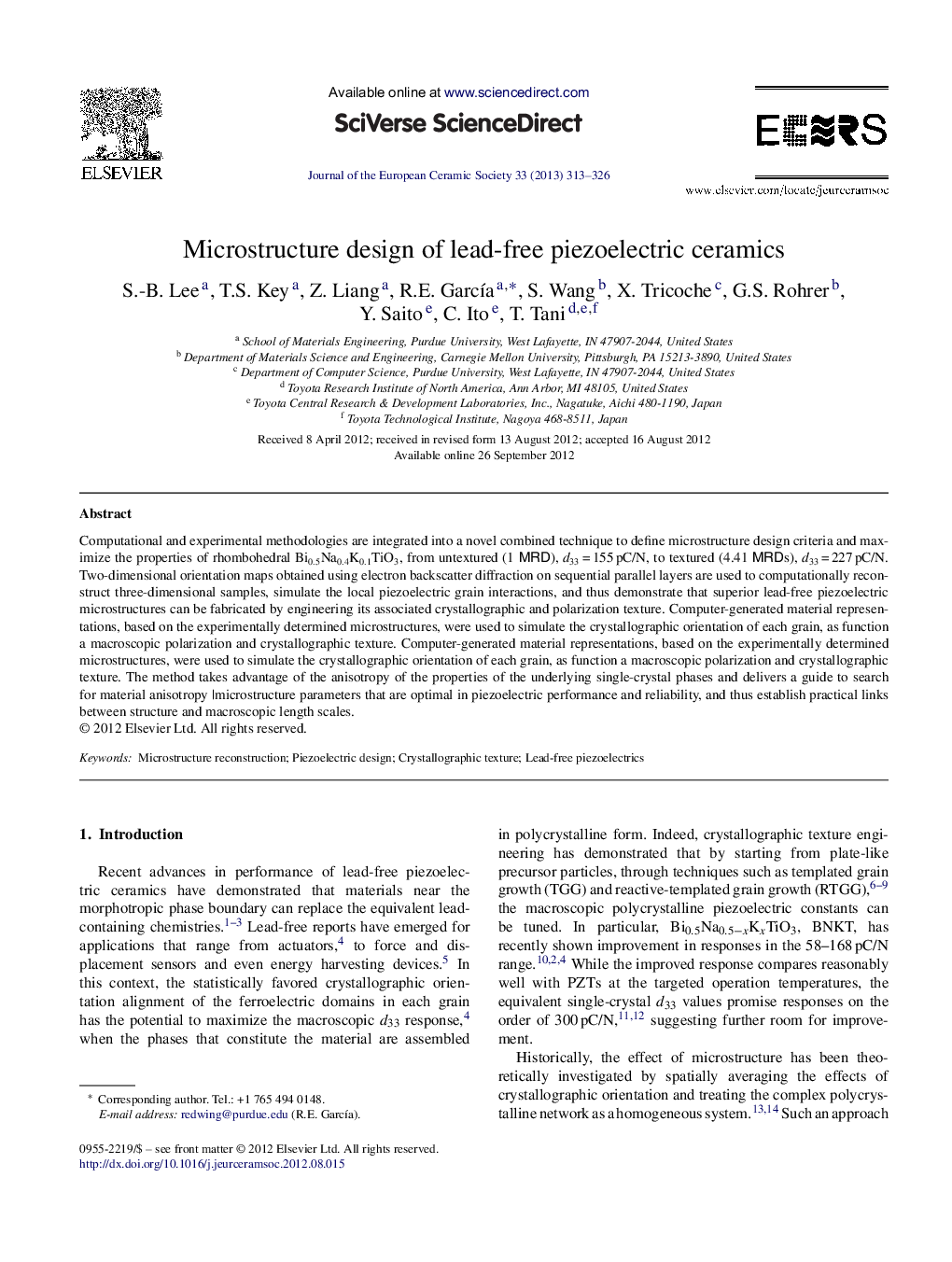| کد مقاله | کد نشریه | سال انتشار | مقاله انگلیسی | نسخه تمام متن |
|---|---|---|---|---|
| 1475772 | 991129 | 2013 | 14 صفحه PDF | دانلود رایگان |

Computational and experimental methodologies are integrated into a novel combined technique to define microstructure design criteria and maximize the properties of rhombohedral Bi0.5Na0.4K0.1TiO3, from untextured (1 MRD), d33 = 155 pC/N, to textured (4.41 MRDs), d33 = 227 pC/N. Two-dimensional orientation maps obtained using electron backscatter diffraction on sequential parallel layers are used to computationally reconstruct three-dimensional samples, simulate the local piezoelectric grain interactions, and thus demonstrate that superior lead-free piezoelectric microstructures can be fabricated by engineering its associated crystallographic and polarization texture. Computer-generated material representations, based on the experimentally determined microstructures, were used to simulate the crystallographic orientation of each grain, as function a macroscopic polarization and crystallographic texture. Computer-generated material representations, based on the experimentally determined microstructures, were used to simulate the crystallographic orientation of each grain, as function a macroscopic polarization and crystallographic texture. The method takes advantage of the anisotropy of the properties of the underlying single-crystal phases and delivers a guide to search for material anisotropy |microstructure parameters that are optimal in piezoelectric performance and reliability, and thus establish practical links between structure and macroscopic length scales.
Journal: Journal of the European Ceramic Society - Volume 33, Issue 2, February 2013, Pages 313–326